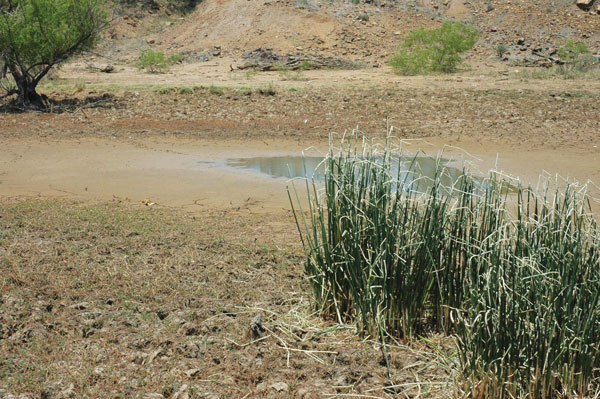November 6, 2013

Throughout the successful 25-year history of the Texas Plant Protection Association, drought has been a common topic during presentations and research.
Dr. Travis Miller, Texas A&M AgriLife Extension Service agronomist and associate department head for soil and crop sciences at Texas A&M University, said the drought of 2011 was unforgettable.
“It was utter devastation,” Miller said. “Everywhere you went there was nothing green. I’ll never forget the sight of the livestock auction sales and the number of cattle going through.”
Dry weather and expectations of extended periods without rainfall have become a predictable aspect of production agriculture for Texas farmers and ranchers the past two decades. According to John Nielsen-Gammon, state climatologist at Texas A&M University in College Station, there’s hope for that trend to reverse in the future.
“The past 25 years have been the warmest on record for Texas,” he said. “The recent trend has been hotter and drier weather, but much of that has been influenced by the Pacific Decadal Oscillation (PDO), which switched from a positive to negative phase during the past 25 years. Over the next 25 years, I would expect PDO to again reverse itself. In combination with global climate change, this would mean stable or slightly warming temperature over the next 25 years and increasing precipitation.”
If you are enjoying reading this article, please check out Southwest Farm Press Daily and receive the latest news right to your inbox.
Five major statewide droughts have decimated Texas agriculture since the mid-1990s. Nielsen-Gammon said that major droughts took place in 1996, 1999-2000, 2005-2006, and 2008-2009 in addition to the present one which started in late 2010. Less severe droughts in recent decades were in 1988, 1989-1990 and 1998.
The total economic losses to Texas agriculture due to drought since 1998 equal a staggering $20.7 billion, according to AgriLife Extension Service data. Drought has been so severe it’s reshaped the number of cattle in the Lone Star State. Texas has 22 percent fewer beef cows over the past three years, a reduction of 1 million head due to drought. Overall, the U.S. has the smallest cow herd in 60 years.
“You see meat processing plants continue to close simply because there are not enough cattle to justify keeping them open,” Miller said. “We’ve recently seen a downturn on corn prices, which should impact the cost of feeding cattle, but the numbers of cattle is short going in.”
While cattle producers and farmers understand the risk associated with production agriculture and are all too familiar with potential drought, the average consumer may not totally understand how devastating the past 20 years of drought have been to Texas agriculture, Miller said.
“It goes far beyond farmers and ranchers,” Miller said. “It’s the folks that process the commodities, the suppliers that sell the inputs and equipment needed to help make a crop along with processors and storage facilities such as gins, warehouses and elevators. Those dollars are turned over in small communities, in some cases where that’s the sole generator of revenue. You see a decline and that cascades across the economic arena in a particularly small community.”
Editor’s note: The following is a list of economic drought losses from 1998-2011 as compiled by Texas A&M AgriLife Extension Service economists:
2011-$7.62 billion
2009 - $3.6 billion
2008 - $1.4 billion
2006 - $4.1 billion
2002 - $316 million
2000 - $1.1 billion
1999 - $223 million
1998 - $2.4 billion
More from Southwest Farm Press:
TPPA officer talks about growth
Boll Weevil eradication efforts charted by TPPA conference
TPPA follows crucial achievements in 25-year history
TPPA conference has followed ag tends for 25 years
You May Also Like




